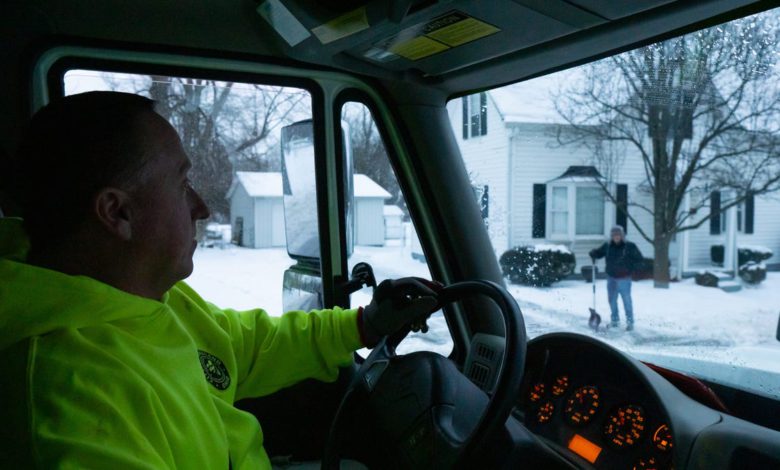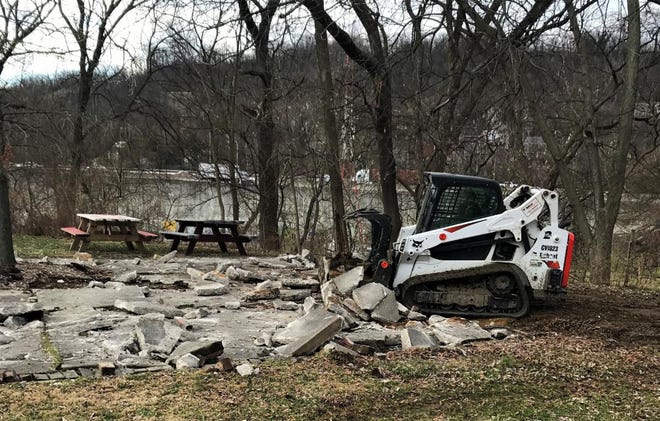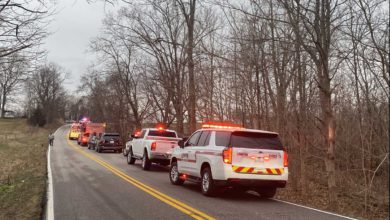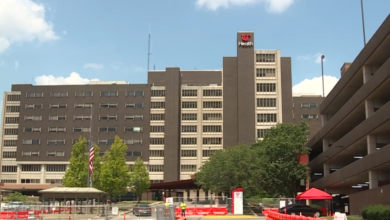

James Sowders drives a snowplow for the City of Loveland Public Works.
On Monday, he started at 7:30 a.m. and began a very long day. Usually off by 4, he figured that it wouldn't be quitting time as usual.
"Tonight, I'll be out here until midnight before I clock out and another driver takes my place for the rest of the night."
Enquirer photojournalist Joe Timmerman followed along:
Sowders, who has worked for the city for 15 years, tosses a blow-up sled back into a front yard. "There's something different every day," he says, explaining his job duties also include fixing streets, mowing lawns and plowing snow. "There are thousands of things to do and not nearly enough people to do them."
Sowders shifts the controls that drop salt from the bed with one hand as he shifts the metal snowplow controls with the other hand. He is one of four Public Works employees driving in loops around Loveland as the area's biggest snowstorm in years rolls through. “The last time I remember a storm like this was in 2008 when we got about 12 inches. When there’s that much snow, there’s nowhere to put it, it just piles up,” he says.
Sowders breaks up clumps of salt with a shovel after climbing into the back of his nearly empty truck bed. His truck was fully loaded with five tons of salt when he started plowing around 4 p.m. During the day on Monday, 150 tons of salt were dispersed onto the streets by City of Loveland trucks, The average per snowy day is around 80-100 tons, according to Scott Wisby, director of Loveland Public Works. An additive in the salt turns it blue and keeps the large loads of salt from getting too clumped up.
Sowders walks through the falling sleet towards a less visible part of his job: forklifting tons of salt into his truck bed. There are two salt bins that are used by the city. This salt bin, in the East Loveland Nature Preserve parking lot, holds 450 tons when full, but is currently dwindling as the city is waiting for their supplier to refill.
Sowders scans the road while waiting at a stop sign, “We spend a lot more time than public works crews in other places around here do," he says. "Where I live, the state waits until the snow is over before they come out and do anything, I guess you could say we take a little bit more pride in the work.”
Sowders’ snowplow is one of the few vehicles braving the storm as he plows ice and spreads salt up one of Loveland’s biggest hills at the Broadway Street and State Route 48 intersection. “The only bad thing about there not being many cars on the road is that they help move, track and spread the salt a little better,” he explains. “I’ve never seen this small amount of people out on the roads. Usually, at this time of day (5 p.m.) it sucks, but it looks like people actually heeded the warnings this time around.”
Sowders climbs onto his truck's hood to break off clumps of ice that stick to his windshield wipers while driving on State Route 48. “Sometimes it feels like the police and fire departments get all the recognition, but it comes in waves. People have brought me out coffee or cookies,” he says. “In the summertime, when I’m working at the parks or fixing water main breaks outside people’s homes, they’ll come out and talk to me and I’ll get a lot of recognition.”
Sowders answers a phone call in the midst of falling sleet after climbing on the front of his truck to clear ice off his windshield wipers. His wife, then his boss calls saying the radar looks like the storm has passed on. “But now it looks like it hasn’t actually stopped. That’s what she does to you — you think you’re ahead and Mother Nature says nope! Back to square one. Even if the snow stopped, we’ll be out here until midnight. Right now, we have to keep focusing on clearing and salting the main roads and hills before we really even touch the side roads and subdivisions.”
Sowders drives his snowplow back to fill the bed with salt before continuing his few-mile looped route around Loveland. While the precipitation on Monday looked mostly like ice or sleet, the Loveland area received about 8 inches of snow. “I mostly deal with water: pipes or main breaks,” he says. “But when it comes to snow plowing — we’re all in, all hands on deck.”
Published
Updated
Source link








